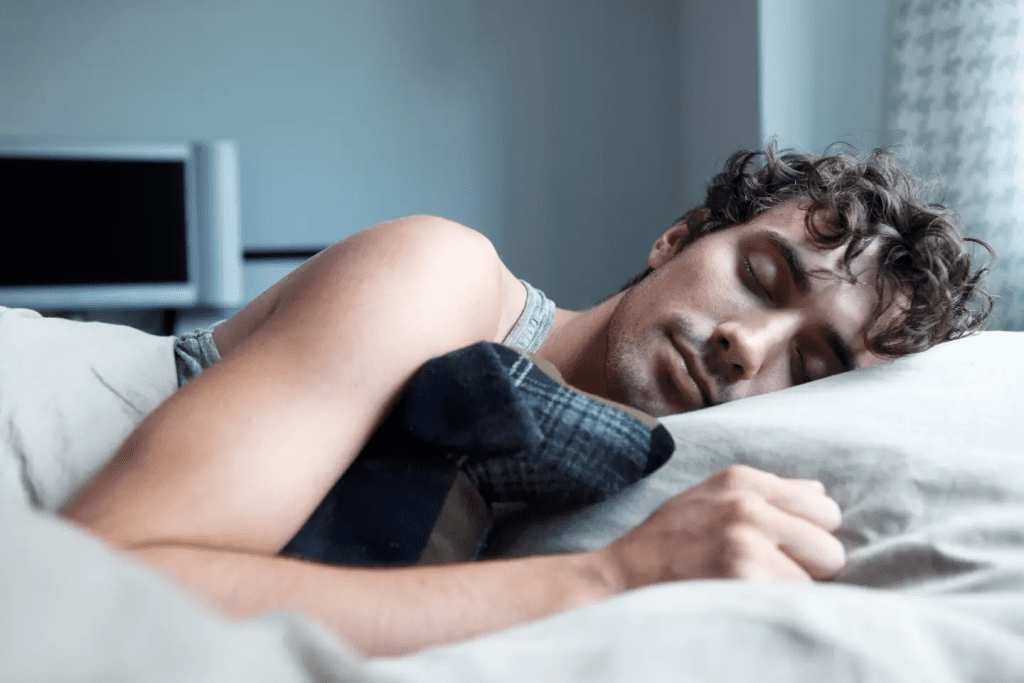When it comes to getting a good night’s sleep, we often focus on the amount of time we spend in bed. But what if the position you sleep in plays just as crucial a role in your overall health and comfort? According to sleep experts like James Leinhardt, the side you sleep on can have different effects on your body, and it’s time to pay attention to what those effects are.
The Myth of the Magic Eight Hours

For years, we’ve been told that eight hours of sleep is the golden rule for a healthy life. But is that really true? According to James Leinhardt, an expert on sleep posture, the emphasis should be less on quantity and more on sleep quality.
“There’s a common misconception about needing eight hours of sleep,” says Leinhardt. “While eight hours is a good target, it’s more important to focus on the quality of your sleep. If you’re getting deep, restful sleep, you might not need a full eight hours.”
Leinhardt’s perspective challenges the traditional mindset, suggesting that how well you sleep is more important than hitting a strict hour count. In fact, studies show that many people don’t consistently achieve eight hours of sleep, and that’s okay as long as the sleep they do get is rejuvenating.
Is Sleeping on Your Side the Best Option?
We all have our preferred sleeping position. For some, it’s curling up on their side, while others spread out on their back or sleep flat on their stomach. But which one is best for your body? Leinhardt suggests there are two optimal sleep positions: lying on your back or sleeping on your side.
- Sleeping on Your Back: This is one of the best positions because it evenly distributes your weight and provides support for your spine. If you add a pillow under your knees, you can further reduce the strain on your lower back, allowing more of your spine to make contact with the mattress. This alignment can be particularly helpful for people who suffer from back pain.
- Sleeping on Your Side: Lying on your side can also be highly beneficial, as it reduces tension on your spine. To optimize this position, it’s essential to align your ears, shoulders, hips, knees, and ankles. Keeping your body stacked in this way helps prevent misalignment and tension buildup.
So, if you’re choosing between side sleeping or back sleeping, both are great options depending on your specific comfort and health needs.
Left Side vs. Right Side: Does It Matter?
Now, if sleeping on your side is your go-to position, you might wonder: which side is better? Surprisingly, there’s a lot of evidence suggesting that sleeping on the left or right can have very different effects on your body.
- Left Side: According to the Sleep Foundation, sleeping on the left side has numerous health benefits. It’s particularly helpful for people who are pregnant or those suffering from gastroesophageal reflux disease (GERD). This is because lying on your left side helps reduce acid reflux by keeping your stomach below your esophagus, reducing the likelihood of stomach acid creeping up. Additionally, it improves digestion by making it easier for waste to travel from your small intestine to the large intestine.
- Right Side: On the other hand, sleeping on your right side can be beneficial for people with heart conditions. A study found that sleeping on your left side can shift the heart’s position due to gravity, which might alter its electrical activity. For those with high blood pressure or heart issues, sleeping on the right side could be a more comfortable and safer option.
For most people without specific medical conditions, alternating between sides throughout the night can be a good practice to reduce the pressure on any one part of the body.
What If You’re Pregnant? The Best Position for You

If you’re pregnant, the recommendation is to sleep on your left side. This position improves blood flow to your heart, kidneys, and the developing baby. It also reduces the pressure that the growing uterus puts on your back, allowing for a more comfortable and restful sleep.
Leinhardt explains that left-side sleeping is particularly important in the later stages of pregnancy. “It’s the safest and most comfortable position, ensuring optimal circulation and minimizing discomfort,” he says.
However, if you find that sleeping on your left side is uncomfortable, it’s okay to alternate to the right side occasionally. The most important thing is finding a position that helps you rest without added strain.
Other Considerations for Side Sleepers
While side sleeping offers many benefits, there are a few things to consider to ensure you’re getting the most out of this position:
- Pillow Support: Use a supportive pillow that keeps your head and neck aligned with your spine. This can help prevent neck pain and headaches.
- Mattress Firmness: Side sleepers often benefit from a mattress that offers medium firmness. Too soft, and you might sink too far into the bed, causing spinal misalignment. Too firm, and you might put pressure on your hips and shoulders.
- Knee Pillow: Some side sleepers find that placing a pillow between their knees can help keep their hips aligned and reduce lower back pain.
The Impact of Sleeping on Your Stomach

While many people swear by stomach sleeping, it’s generally not recommended by sleep experts. Sleeping on your stomach can cause strain on your neck and back, leading to discomfort and even long-term issues. This position forces your head to turn to one side, which can result in misalignment of the spine.
If you’re a stomach sleeper and find it hard to break the habit, try gradually transitioning to a side-sleeping position. This might help alleviate any strain on your neck and back over time.
Conclusion: The Right Sleep Position for Your Health
The position you sleep in can have a significant impact on your overall health and well-being. While there’s no one-size-fits-all solution, the key is to find a position that supports your spine, aligns your body, and feels comfortable to you. For most people, sleeping on the back or side provides the best support, while alternating between the left and right sides can balance the benefits and reduce pressure points.
So, the next time you get ready for bed, think about your sleep position—it could be the secret to waking up feeling refreshed and pain-free.


